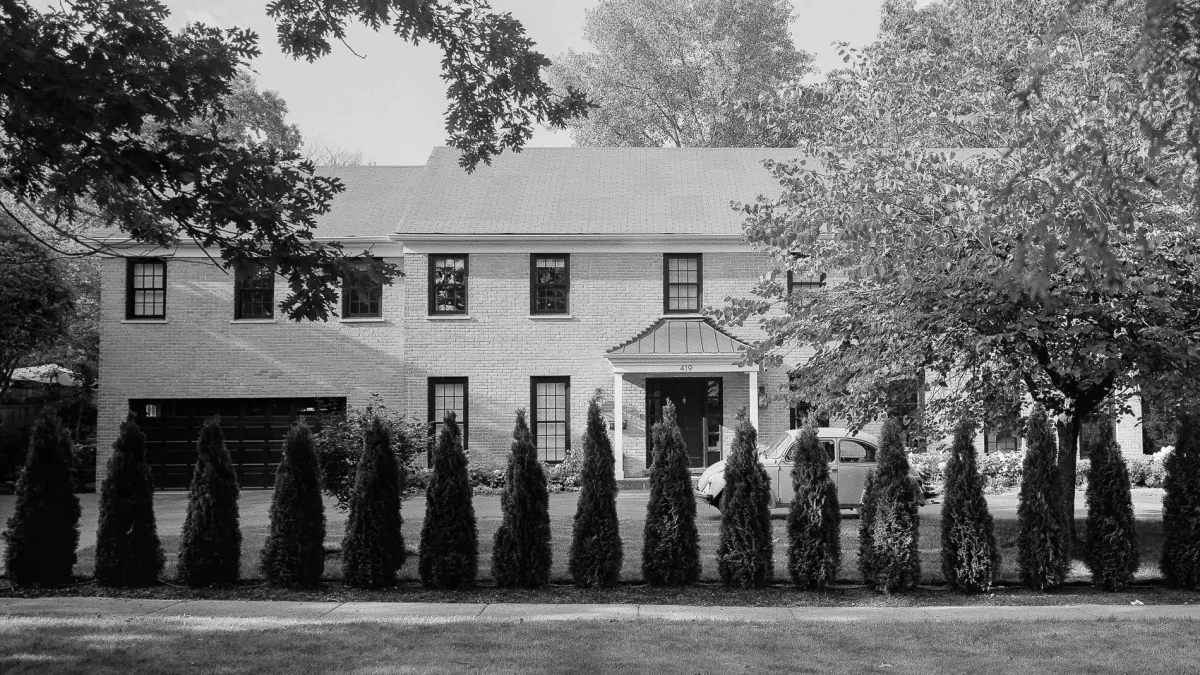
Master the Zone System: How to Take Control of Your Film Photography
The Zone System is one of the most powerful tools a film photographer can use to create stunning black-and-white prints. Developed by Ansel Adams and Fred Archer, this method allows you to precisely control exposure and development, ensuring your negatives translate into expressive, high-quality prints.
Want to see it in action? Watch the full video here:
By the end of this guide, you’ll understand exactly what the Zone System is, how to use it effectively, and even how to apply it to roll film like 35mm and 120.
What the Zone System Is (and What It Isn’t)
Before diving in, let’s clarify a crucial point: The Zone System is not a magic fix for bad photos.
It won’t improve poor composition or lighting.
It won’t automatically make your images great just because you applied it.
Think of it like using fiber-based paper in the darkroom—just because you use it doesn’t mean the print is any good.
Instead, the Zone System is a method for controlling tonal values, allowing you to create prints that match your creative vision.
What Is the Zone System?
In simple terms, the Zone System is a way to map the brightness values in a scene to predictable tones in your final print. Adams himself described it as a system that helps relate the luminance of a subject to the grayscale values that appear in the image.
Why It Matters
One of the biggest challenges in black-and-white photography is dealing with the huge contrast range in nature. Our eyes can perceive far more detail in highlights and shadows than photographic paper can render. The Zone System helps bridge that gap by ensuring:
Proper exposure of the negative
Controlled development to achieve the best tonal range
Creative placement of values to enhance mood and storytelling
By using this system, you can take what you see with your eyes and translate it onto paper exactly how you envisioned it.
Breaking Down the 11 Zones
The Zone System divides tones into 11 zones, each representing one stop of light. Here’s a quick breakdown of what each zone represents:
Low Values (Shadows)
Zone 0 – Pure black, no detail
Zone 1 – Slight tonality, no texture
Zone 2 – First hint of texture in deep shadows
Zone 3 – Dark areas with detailed texture (shadow detail)
Middle Values (Midtones)
Zone 4 – Normal shadow detail (e.g., dark foliage)
Zone 5 – Middle gray (neutral tone, clear north sky)
Zone 6 – Light gray (average Caucasian skin in sunlight)
High Values (Highlights)
Zone 7 – Very light skin, snow in side lighting
Zone 8 – Whites with texture (highlight detail)
Zone 9 – Almost pure white, minimal texture
Zone 10 – Pure white (paper base, specular highlights)
Knowing these zones allows you to place tones deliberately for creative expression and technical precision.
How to Use the Zone System in the Field
Step 1: Use a Spot Meter
A spot meter helps measure precise areas in your scene. Most meters assume that whatever you point them at is Zone 5 (middle gray) by default.
Step 2: Expose for the Shadows
Identify a shadow area where you want detail.
Take a spot meter reading.
Adjust your exposure to place that shadow on Zone 3 or 4.
For example, if your meter reads EV 10, placing it on Zone 4 means you should underexpose it by one stop from what the meter suggests.
Step 3: Develop for the Highlights
After exposing for the shadows, check the brightest part of your scene. If it falls too high on the zone scale (like Zone 9 or 10), reduce development time to bring it into the printable range.
This is where the Zone System really shines—controlling contrast through development rather than just in printing.
Roll Film & The Zone System
Unlike sheet film, roll film has multiple exposures on the same strip, making individual development adjustments difficult. Here are some tips:
Prioritize your best shot – If one image on the roll is critical, develop for that image, even if it slightly affects the others.
Use multiple camera bodies or film backs – Have different backs loaded for high, normal, and low contrast scenes.
Expose shadows carefully – If using a built-in meter, get close to the shadow area, meter it, then underexpose by one stop to place it at Zone 4.
Final Thoughts: A Tool, Not a Rule
The Zone System is an incredibly powerful tool, but it shouldn’t inhibit your creative process. Your goal should be to create negatives that are easy to print, while still embracing artistic flexibility in the darkroom.
Key Takeaways:
✅ Expose for the shadows, develop for the highlights.
✅ Learn to pre-visualize the final print.
✅ Use a spot meter and place your values deliberately.
✅ For roll film, prioritize key shots and develop accordingly.
By mastering the Zone System, you’ll gain full control over your black-and-white photography, making it easier to create expressive, high-quality prints.